This is the best lovage pesto! Try an unusual pesto recipe bursting with fresh flavor, a condiment that goes with anything and makes any dish taste better.
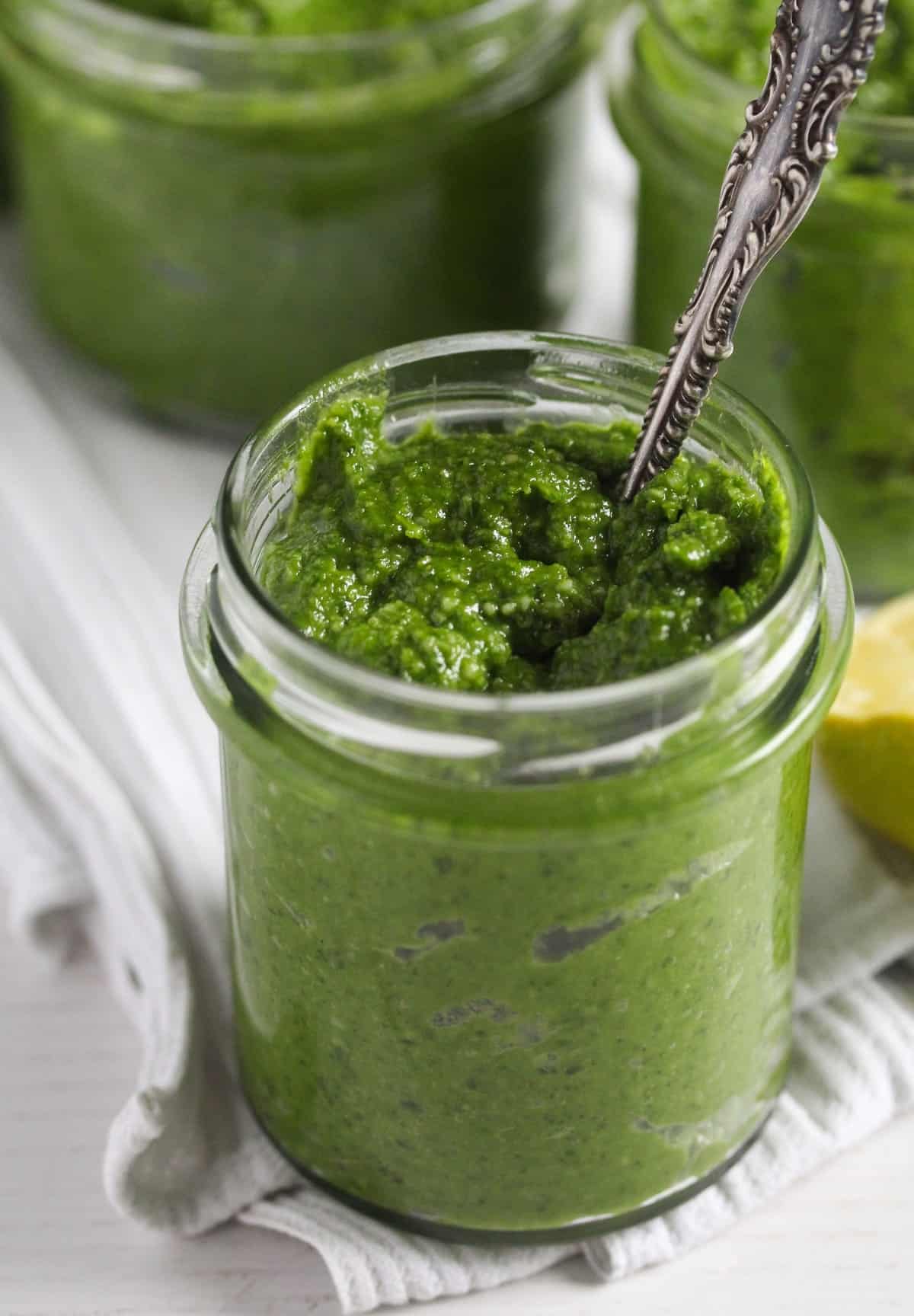
Jump to recipe
What is lovage?
Lovage is a perennial plant native to the Mediterranean region. It is easy to cultivate, it grows tall and bushy, and after one or two years, you will have enough leaves to make lovage pesto for the entire neighborhood…
Lovage tastes like a mixture of celery and parsley but is more potent; I find it is one of the most aromatic herbs. After working with the plant to make lovage pesto, your hands will smell like lovage for the rest of the day.
A simple plate of spaghetti with lovage pesto makes an incredible meal, bold, fresh, and unique. Perfect for a quick dinner yet fit to serve to guests.
Try our creamy and delicious Lovage Soup Recipe, too. And if you like bold homemade pesto, check out the Wild Garlic Pesto or the Lemon Balm Pesto.
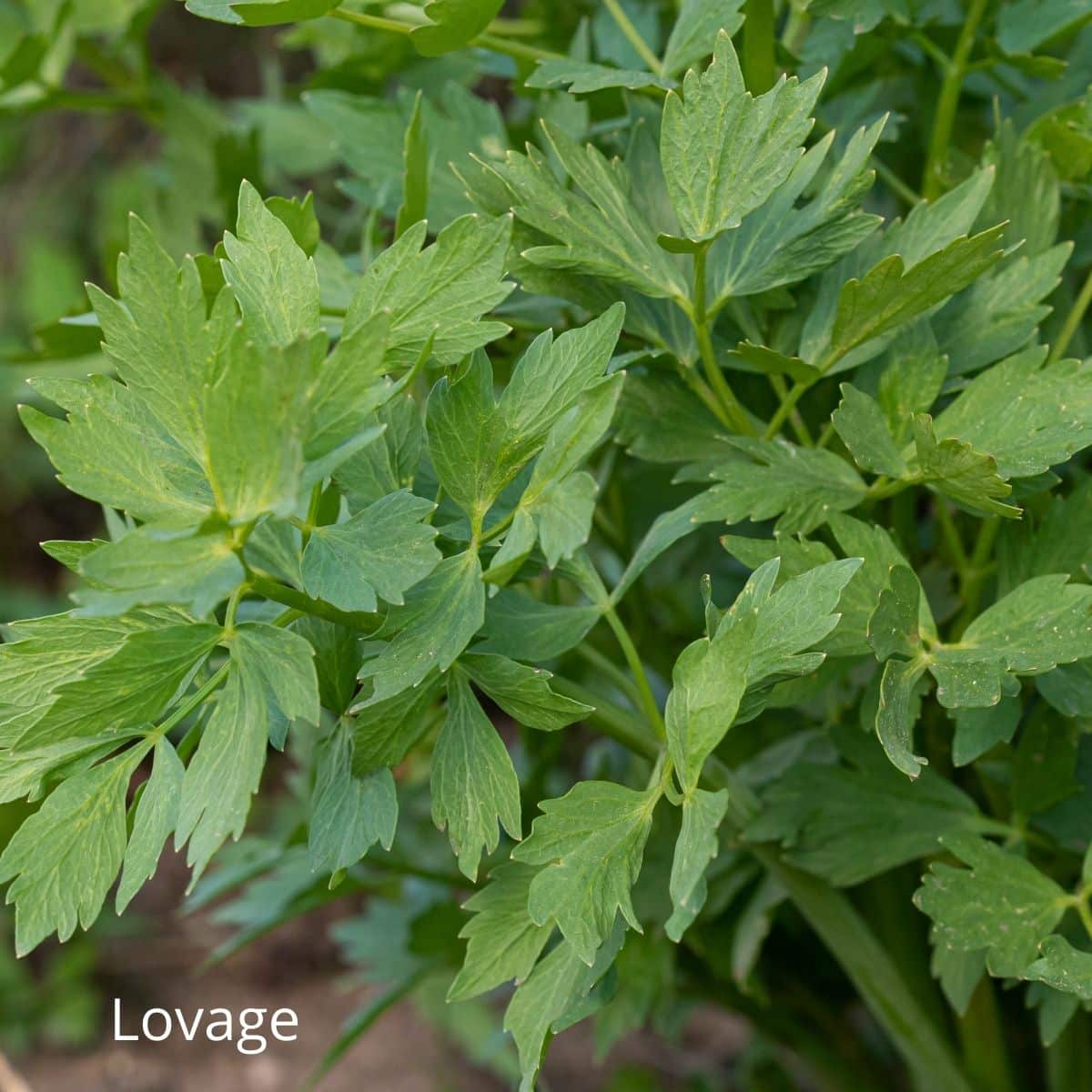
Recipe ingredients
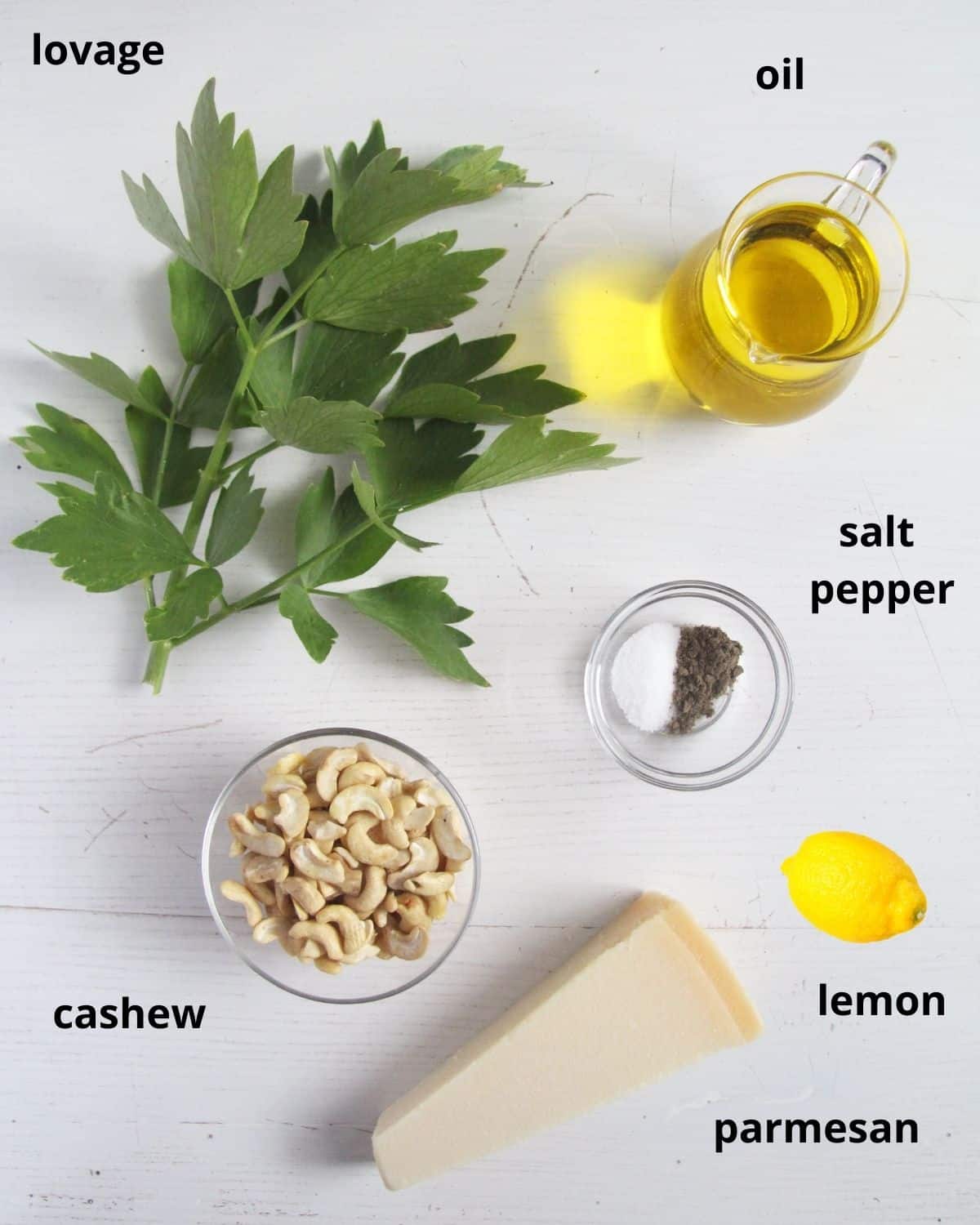
- Lovage leaves: You will need 7 oz/ 200 g leaves. I don’t bother giving you the amount in cups because you will never be able to measure these leaves correctly in a cup. Only measure the leaves after you’ve removed them from the stems.
- Oil: Preferably neutral-tasting oils like sunflower or canola oil; they allow the lovage taste to shine through. However, a mild olive oil would be fine.
- Cheese: Parmesan cheese or vegetarian hard cheese.
- Nuts: Cashew nuts are delicious. However, they can be replaced with other nuts like pine nuts, almonds, or sunflower seeds.
See the recipe card for full information on ingredients and quantities.
How to make lovage pesto?
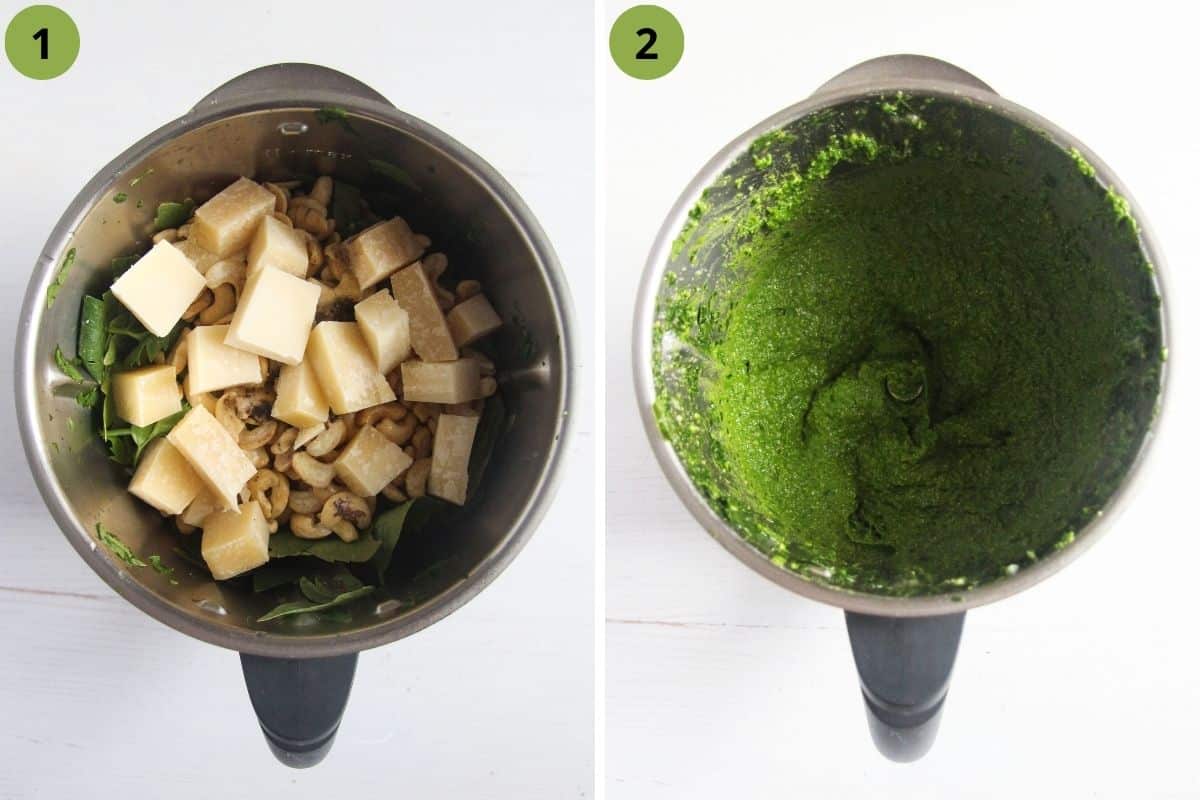
- Step #1: Place all the ingredients in a food processor.
- Step #2: Blend until smooth, scraping the walls of the food processor a few times in between.
Good to know!
Consistency: This pesto (and most of those I make) is relatively stiff compared to store-bought pesto. That’s a good thing; it means the pesto contains less oil, so it’s less fatty and calorie-laden.
Jar size: Preferably small ones, 150-200 g/ 5-6 oz. I don’t bother buying canning jars for this; I reuse small jars that used to contain commercial pesto, capers, or bread spreads. One pesto jar of this capacity is usually enough for 500 g/ 1 lb of pasta.
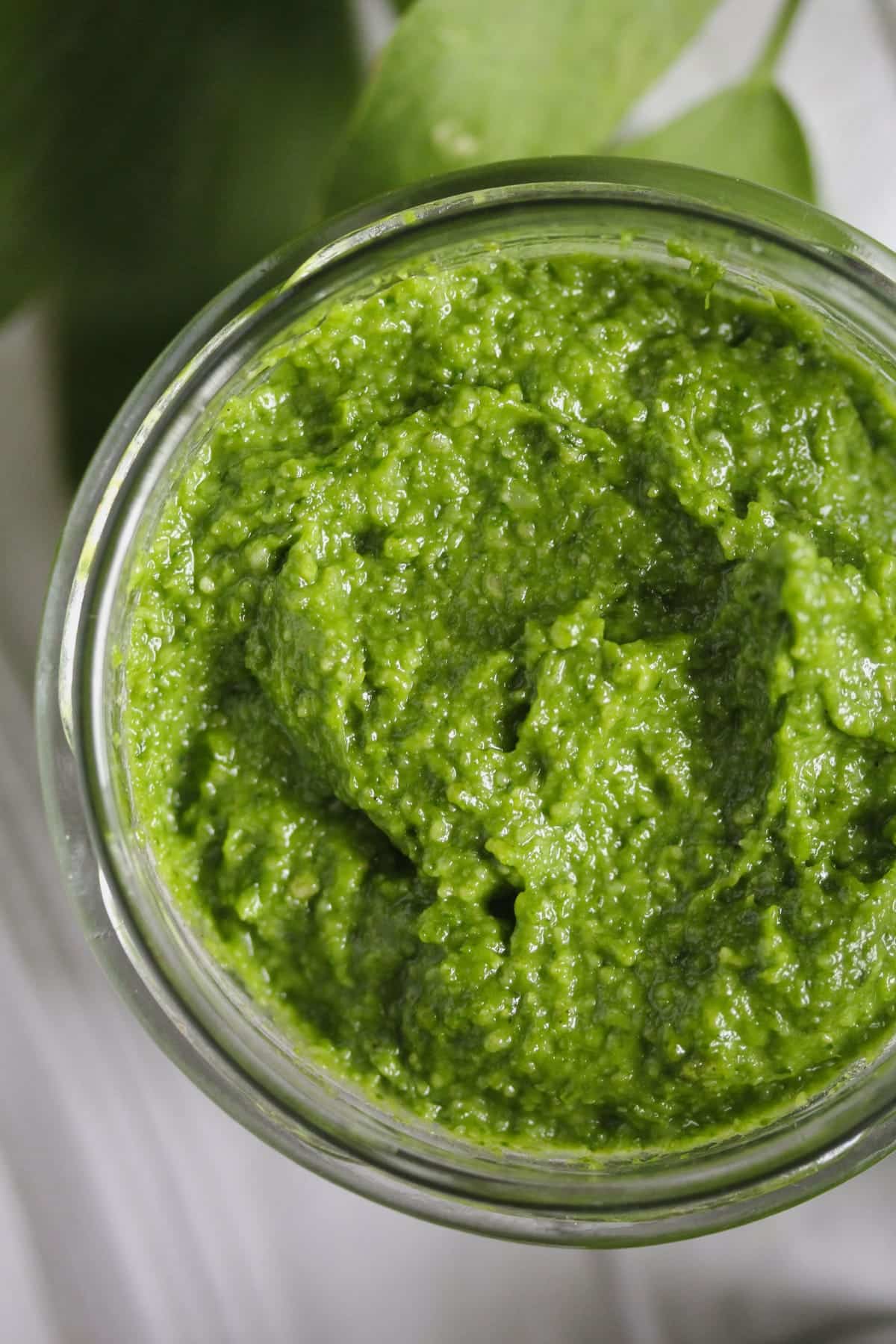
Recipe FAQs
Refrigerate the jars; they will be fine for about 2 weeks.
Freeze it, and you can enjoy it for at least one year. Defrost the jars in the fridge or on the counter. Defrosted lovage pesto will keep in the refrigerator for about 2 weeks.
I never discard them. Instead, I freeze them and use them to make chicken stock(like in this Romanian chicken soup), beef bone broth, or vegetable stock. Wash and dry them, chop them roughly, and freeze them in freezer bags.
Wash and dry the leaves and keep them refrigerated in an airtight container. They will be fine for about 4-6 days, but check regularly and discard any leaves that start to get mushy.
Freeze the chopped leaves in freezer bags; they will keep well for at least 6 months.
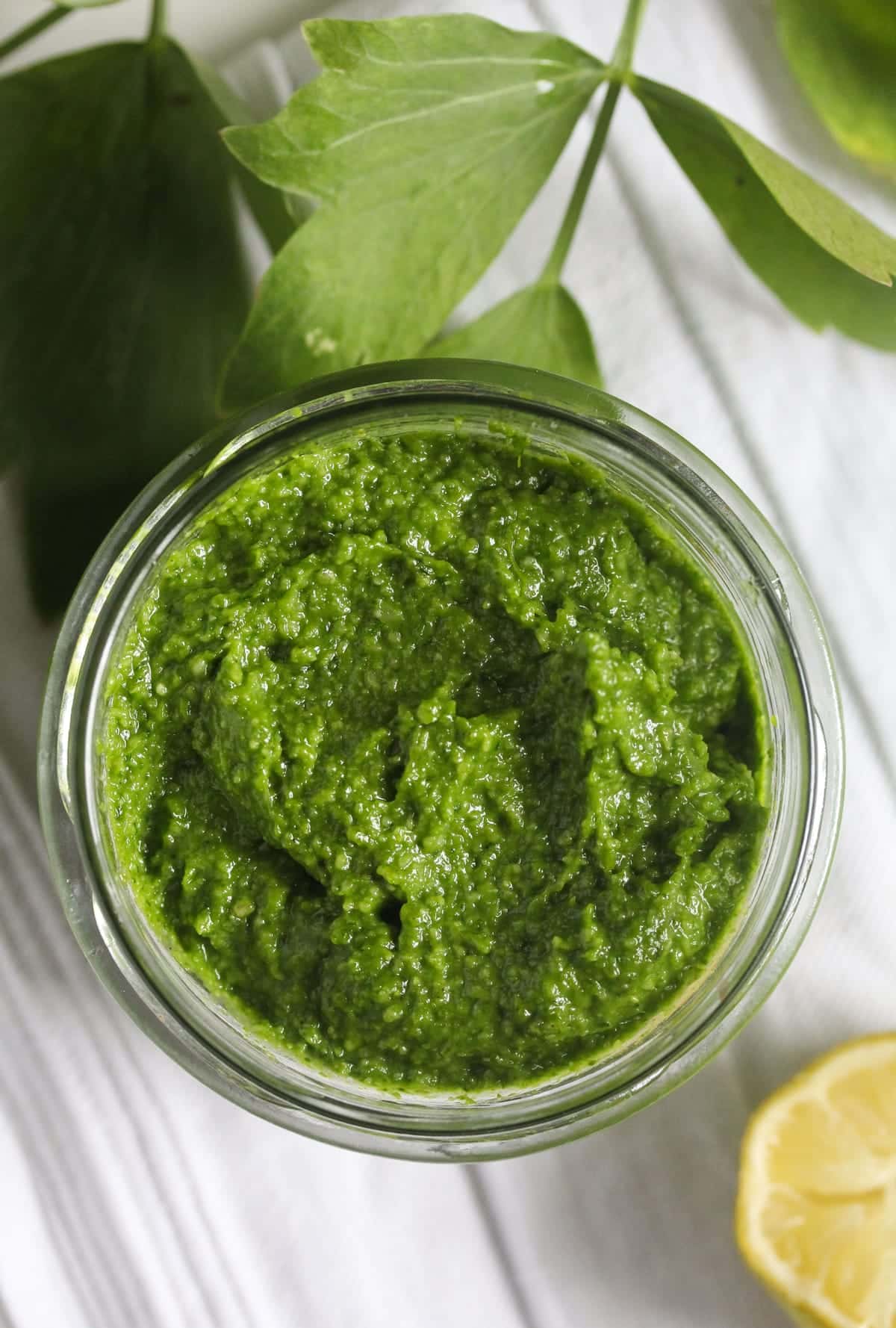
How to use it?
Make pesto pasta, smear it on sandwiches instead of butter, and add it to salad dressing or dips, soups, or scrambled eggs.
Use it to make:
Do you like this recipe?
Please leave a good rating in the recipe card below. Stay in touch through social media: Pinterest, Facebook, and Instagram. Don’t forget to tag #whereismyspoon when you try a recipe!Recipe
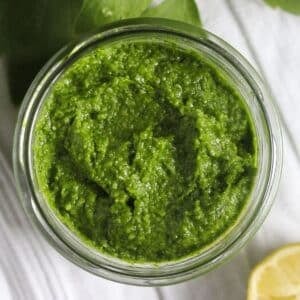
Lovage Pesto
Equipment
- 1 Food processor
- 5-6 Small jars 150-200 g/ 5-6 oz capacity
Ingredients
- 7 oz lovage leaves 200 g, Note 1
- 1 cup cashew nuts 5.5 oz/ 150 g
- 1 cup sunflower oil or canola 250 ml, Note 2
- 5.5 oz Parmesan 150 g, Note 3
- 2 tablespoons lemon juice more to taste
- 1 ½ teaspoon fine sea salt or Kosher more to taste
- ½ teaspoon ground black pepper Note 4
Instructions
- Pick the leaves from the stems and measure the required amount.7 oz lovage leaves / 200 g
- Place about half of the leaves in a food processor; they will probably fill the processor. Process them shortly to make space for the remaining ingredients.
- Add the remaining leaves, nuts, chopped cheese, oil, lemon juice, salt, and pepper.1 cup cashew nuts/ 150 g + 1 cup sunflower oil or canola / 250 ml + 5.5 oz Parmesan / 150 g + 2 tablespoons lemon juice + 1 ½ teaspoon fine sea salt or Kosher + ½ teaspoon ground black pepper
- Process until smooth, scraping the walls of the food processor a few times in between.
- Adjust the taste with more salt, pepper, and lemon juice (if necessary).
- Transfer to jars.
Notes
- Measurements: Only measure the lovage after removing the leaves from the stems. You will need more or less 2 large bunches.
- Oil: I use sunflower or canola oil or a mixture of them. Olive oil is also fine, preferably a lighter sort.
- Parmesan is not vegetarian; for a vegetarian pesto, use vegetarian hard cheese. Please use freshly grated cheese, not pre-grated.
- Heat: To give the pesto a bit of heat, add some cayenne pepper. I add about ⅛ teaspoon but use it to taste.

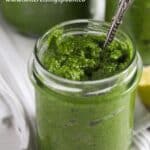

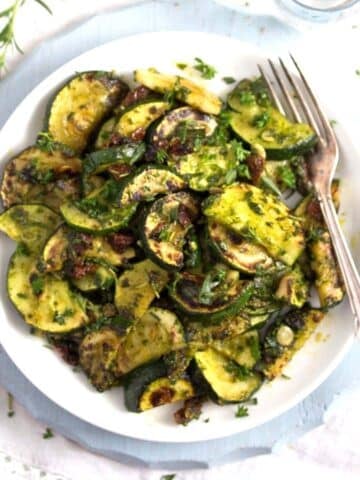
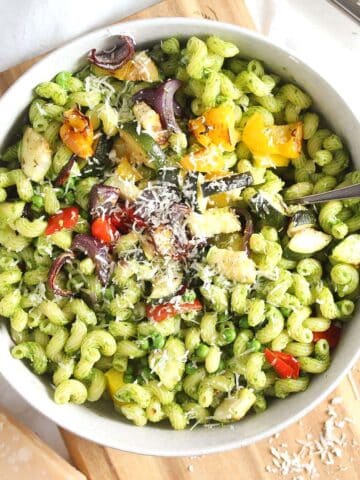
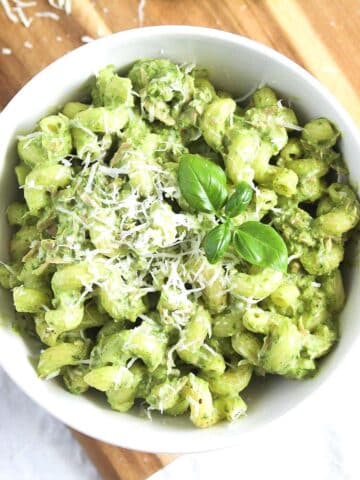

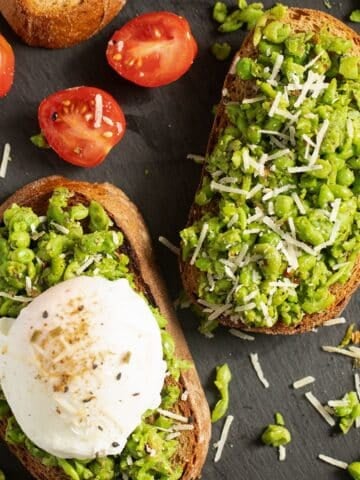
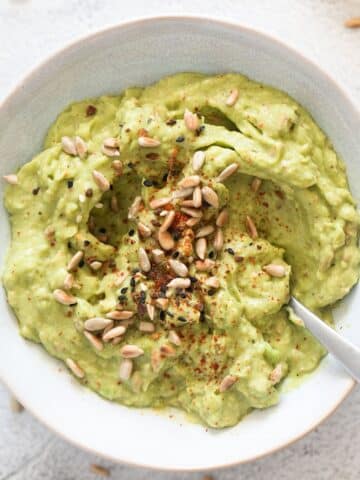
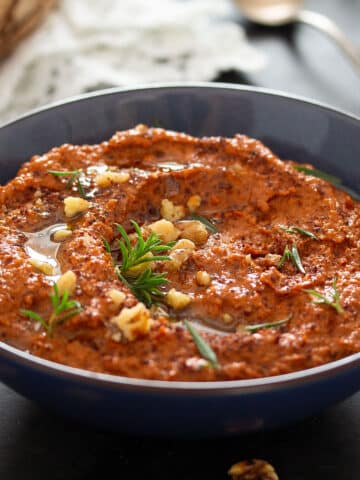

M says
I made this last year, and my family and I loved it. Which is great, because my lovage is huge this year. Can't wait to make more.
Adina says
Hi, I am happy to hear it. I made about 6 jars myself last week and the plant is still large. But we love this pesto too, so I will make more before it's gone.
Lisa says
Thanks for this! I used almonds and olive oil, and skipped the salt and pepper, and this is wonderful stuff. Only disappointment was that what I thought was a huge quantity of leaves only weighed in at 3.5 oz, so a smaller batch than expected. Will have to do another round soon!
Adina says
I am happy you like it! I planned to make some today as well, the lovage bush in my garden is huge.